SLUSEV2C June 2022 – March 2023 UCC28C50-Q1 , UCC28C51-Q1 , UCC28C52-Q1 , UCC28C53-Q1 , UCC28C54-Q1 , UCC28C55-Q1 , UCC28C56H-Q1 , UCC28C56L-Q1 , UCC28C57H-Q1 , UCC28C57L-Q1 , UCC28C58-Q1 , UCC28C59-Q1
PRODUCTION DATA
- 1 Features
- 2 Applications
- 3 Description
- 4 Revision History
- 5 Device Comparison Table
- 6 Pin Configuration and Functions
- 7 Specifications
-
8 Detailed Description
- 8.1 Overview
- 8.2 Functional Block Diagram
- 8.3 Feature Description
- 8.4 Device Functional Modes
-
9 Application and Implementation
- 9.1 Application Information
- 9.2
Typical Application
- 9.2.1 Design Requirements
- 9.2.2
Detailed Design Procedure
- 9.2.2.1 Primary-to-Secondary Turns Ratio of the Flyback Transformer (NPS)
- 9.2.2.2 Primary Magnetizing Inductance of the Flyback Transformer (LM)
- 9.2.2.3 Number of Turns of the Flyback Transformer Windings
- 9.2.2.4 Current Sense Resistors (R24, R25) and Current Limiting
- 9.2.2.5 Primary Clamp Circuit (D7, D1, D3, R2, R28) to Limit Voltage Stress
- 9.2.2.6 Primary-Side Current Stress and Input Capacitor Selection
- 9.2.2.7 Secondary-Side Current Stress and Output Capacitor Selection
- 9.2.2.8 VDD Capacitors (C12, C18)
- 9.2.2.9 Gate Drive Network (R14, R16, Q6)
- 9.2.2.10 VREF Capacitor (C18)
- 9.2.2.11 RT/CT Components (R12, C15)
- 9.2.2.12 HV Start-Up Circuitry for VDD (Q1, Q2, D2, D4, D6, D8, R5)
- 9.2.2.13 Desensitization to CS-pin Noise by RC Filtering, Leading-Edge Blanking, and Slope Compensation
- 9.2.2.14 Voltage Feedback Compensation
- 9.2.3 Application Curves
- 9.3 PCB Layout Recommendations
- 9.4 Power Supply Recommendations
- 10Device and Documentation Support
- 11Mechanical, Packaging, and Orderable Information
Package Options
Mechanical Data (Package|Pins)
- D|8
Thermal pad, mechanical data (Package|Pins)
Orderable Information
7.6 Typical Characteristics
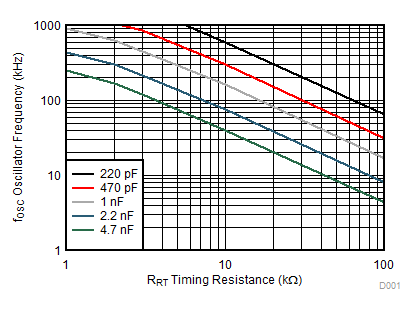 Figure 7-1 Oscillator Frequency vs Timing Resistance and Capacitance
Figure 7-1 Oscillator Frequency vs Timing Resistance and Capacitance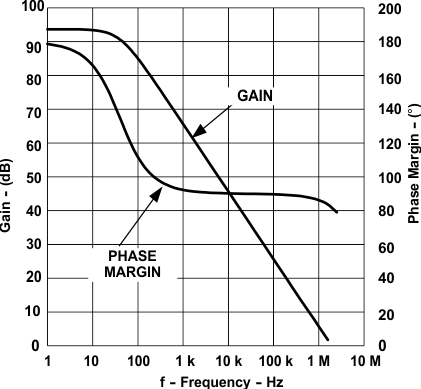
| Group 1: UCC28C50-Q1 to UCC28C55-Q1Group 2: UCC28C56H-Q1 to UCC28C59-Q1 |
| Group 1: UCC28C50-Q1 to UCC28C55-Q1Group 2: UCC28C56H-Q1 to UCC28C59-Q1 |
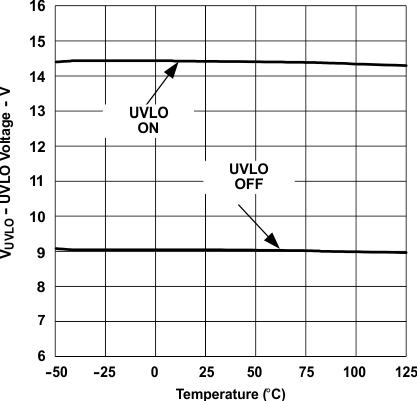
| UCC28C52-Q1 and UCC28C54-Q1 |
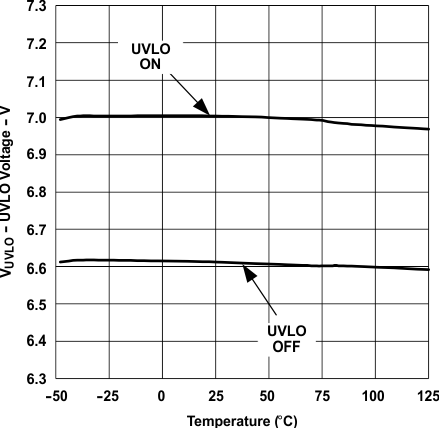
| UCC28C50-Q1 and UCC28C51-Q1 |
| UCC28C56L-Q1 and UCC28C57L-Q1 |
Figure 7-15 Supply Current vs Oscillator Frequency
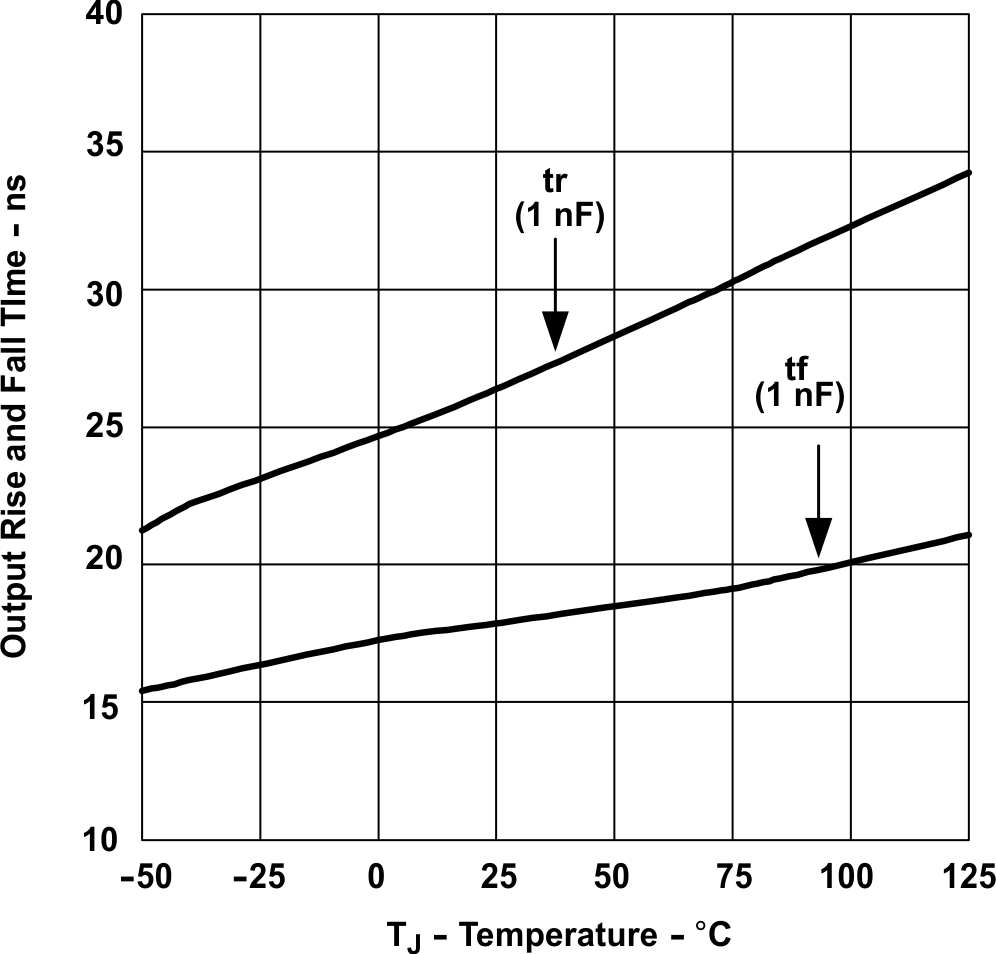 Figure 7-17 Output Rise Time and Fall Time vs Temperature
Figure 7-17 Output Rise Time and Fall Time vs Temperature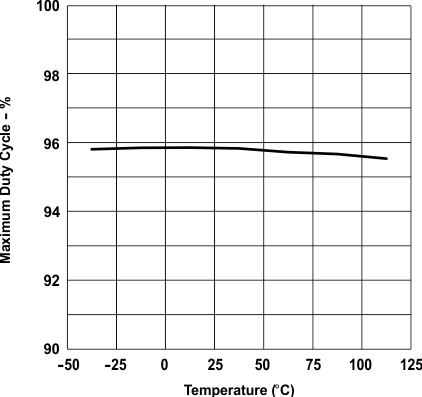
| UCC28C50-Q1, UCC28C52-Q1, UCC28C53-Q1, UCC28C56H/L-Q1, and UCC28C58-Q1 |
| Group 1: UCC28C50-Q1 to UCC28C55-Q1Group 2: UCC28C56H-Q1 to UCC28C59-Q1 |
| Group 1: UCC28C50-Q1 to UCC28C55-Q1Group 2: UCC28C56H-Q1 to UCC28C59-Q1 |
| VCS = 0Group 1: UCC28C50-Q1 to UCC28C55-Q1Group 2: UCC28C56H-Q1 to UCC28C59-Q1 |
| Group 1: UCC28C50-Q1 to UCC28C55-Q1Group 2: UCC28C56H-Q1 to UCC28C59-Q1 |
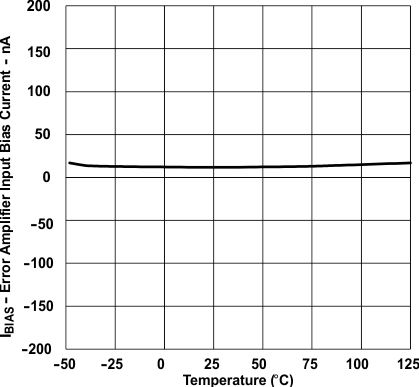 Figure 7-8 Error Amplifier Input Bias Current vs Temperature
Figure 7-8 Error Amplifier Input Bias Current vs Temperature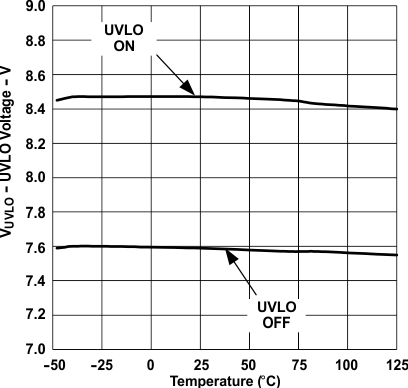
| UCC28C53-Q1 and UCC28C55-Q1 |
| UCC28C56H-Q1 and UCC28C57H-Q1 |
| UCC28C58-Q1 and UCC28C59-Q1 |
| Group 1: UCC28C50-Q1 to UCC28C55-Q1Group 2: UCC28C56H-Q1 to UCC28C59-Q1 |
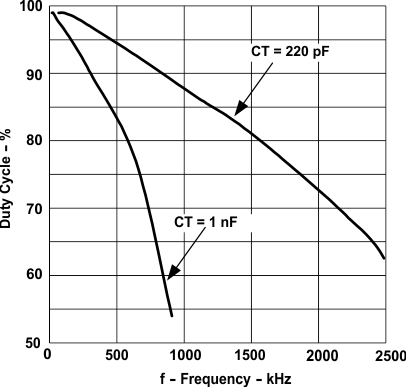 Figure 7-18 Maximum Duty Cycle vs Oscillator Frequency
Figure 7-18 Maximum Duty Cycle vs Oscillator Frequency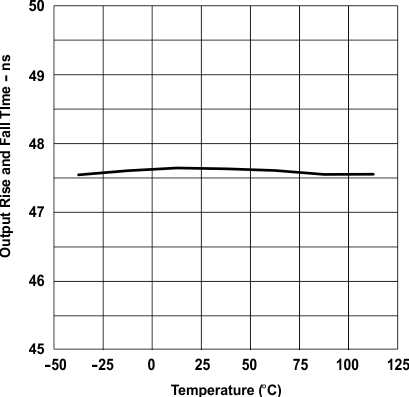
| UCC28C51-Q1, UCC28C54-Q1, UCC28C55-Q1, UCC28C57H/L-Q1, and UCC28C59-Q1 |
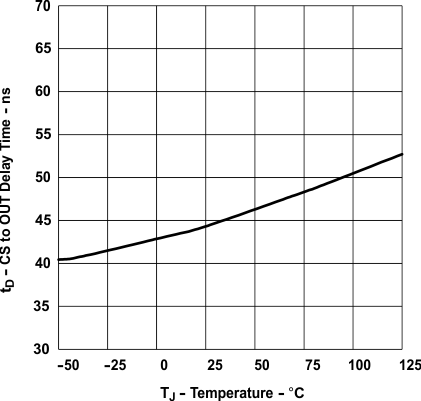 Figure 7-22 Current Sense to Output Delay Time vs Temperature
Figure 7-22 Current Sense to Output Delay Time vs Temperature